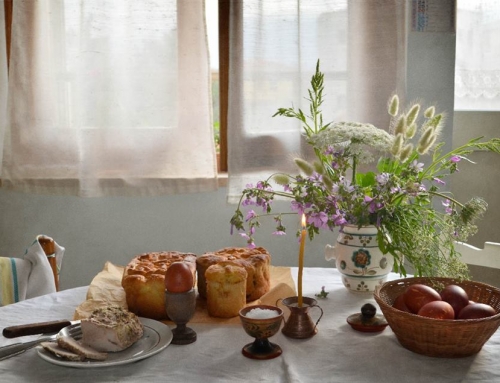New Year is the most beloved and celebrated holiday among Russians. Full of rich history, fascinating traditions and amusing customs, New Year celebrations trace back to Pagan Rus’. Back in those days, the year’s beginning was celebrated with the beginning of nature’s revival — usually in mid-March.
Sometime in the late 14th or early 15th century, came the Christening of the Great Rus’, and with it a new set of chronology and traditions. Adopting the European Julian calendar, the Orthodox Church officially moved the beginning of the year from March to September as a way to conform to the Nicean canons.
This shift signaled the growing importance of Christianity in the Old Rus’. And so it was that the New Year was now celebrated on September 1st with organized festivities and decoration of trees.
Fall Into Winter a New New Year
It was not until 1699 that New Year’s Day moved to the more recognizable date of January 1st. Russian Emperor Peter the Great issued an order that the beginning of the New Year was to now be celebrated on January 1 based on the Julian calendar. This occasion was also to be marked by decorating homes with pine or fir trees, and juniper branches. The evergreen branches were a symbol of lasting life and prosperity.
During the rein of Peter the Great, some Protestant countries in Europe still accepted the Julian calendar, celebrating New Year on the same day as Russia, however it was actually 11 days later than the Catholic countries who had adopted the present day Gregorian calendar back in 1582. But by the 18th century practically all of Europe was following the Gregorian calendar, and so Russia was once again out of sync with Western Europe.
Banned Holiday Celebrations
In 1929 Soviet authorities abolished all traditions of Christmas, including tree decorations and festive holiday parties. Any celebrations of New Year were also abandoned for fear of authorities and retribution.
It was not until 1935 when an article appeared in the Soviet newspaper Pravda (“Truth”) enticing the public to organize a children’s celebration of the fir tree, that New Year festivities returned to people’s homes. Gaining new status and popularity, New Year was now celebrated from the night of December 31 to January 1. In the late 1940s, January 1 became an official holiday and sanctioned day off.
Modern Traditions of Russian New Year
Preparations for New Year celebrations in modern day Russia begin in mid December when streets, shops, banks and businesses are decorated with garlands and toys, while adorned fir trees line the boulevards of main city streets. Every city, town and settlement has its major fir tree lit up with electric garlands set up in the central square. Sparkling ice sculptures, decorated snowmen and figurines of Ded Moroz (Grandpa Frost) and Snegurochka (Snow Maiden) are placed all around the tree.
Homes are also decorated with pine and fir trees that are traditionally kept until January 13-14 when the Russians celebrate the Old New Year.
Russian New Year Fun Facts and Traditions
- Fir trees were traditionally decorated with wooden toys, fruits, nuts and sweets. Glass decorations did not come into fashion until 1850s.
- Modern trees are decorated with glass balls and toys, garlands of lights and LOTS of tinsel.
- Festive masquerade matinees called Novogodnia Elka (New Year Tree) are traditionally held in kindergartens and schools across the country. Children dress up as various folklore and winter characters, like foxes, hares, and snowflakes, and take part in festive song singing, dancing and theater performances surrounding the fir tree. Ded Moroz and Snegurochka visit the children to bring them presents and light up the tree.
- Russians have a saying: “As you meet the New Year, so shall you spend it.” And so it is customary for Russians to celebrate the holiday in style and sophistication in the hearty presence of family and friends.
- It is believed that “all debts should be left in the old year,” meaning that all debts should be repaid prior to the start of the New Year.
- Celebrating regeneration and re-birth, on New Year Russians wear new clothes that include the “lucky color” of the year to come.
- An interesting Russian custom in wish making involved writing your wish on a piece of paper, burning it with a candle, mixing the ashes in your champagne glass and drinking it before the last chime strikes. I think I’ll actually try it this year!!
Do you know any funny, bizarre or just plain odd Russian New Year traditions? Share them with us on Facebook.






